A good Vietnamese curry hinges on the spice blend used and most cooks outsource it. In Vietnam, you can go to a spice vender at Cho Ben Thanh and buy a blend that suits your taste. But even so, what goes into Vietnamese curry powder? What makes it Viet?
Vietnamese curry is not influenced by nearby Thailand, but rather India. In particular, cooks prefer a Madras-style curry powder blend with a peppercorn kick. I've long purchased curry powder but when my mother told me about a friend who carefully showed her how to select and pound spices into a heady, mouthwatering paste for curry, I wanted to have that kitchen experience too. Here's my modern take, with a recipe to help guide you along.
Jump to:
Why make your own curry powder?
The flavor and aroma are fresh and much more livelier when made with freshly ground spices. You can control heat levels and flavor outcomes when you know that your curry is made from good spices. Whenever I buy curry powder, I always wonder when and where the spices come from. Gathering spices takes time but if you have a spice shop or an South Asian or East Asian grocer nearby, you can buy small quantities of spices to blend up.
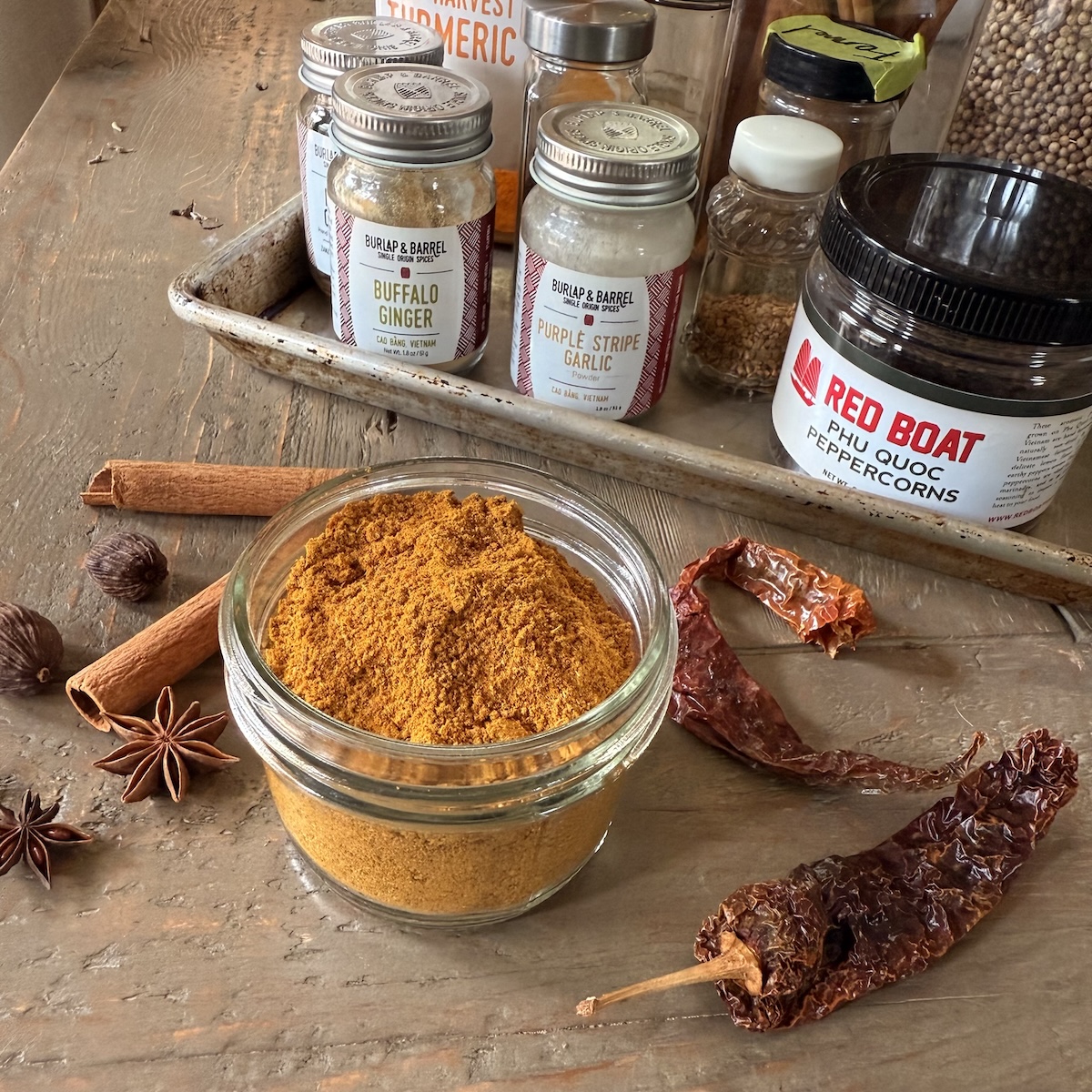
Unlike my mother's friend, you do not have to hand pound the spices, unless you want a workout. I use an electric spice grinder like this one by Cuisinart, which mimics hand pounding well. A clean, dry coffee grinder will work too.
Some Viet curry powder pointers
- Buy spices where there's bound to be a high turnover. For instance, head to a spice shop, health food store with bulk spice bins, Indian market, Chinese or Southeast Asian market. That will bring you closer to good flavor! Online spice vendors are plentiful and among my favorites are Burlap and Barrel, where I source a full suite of spices from Vietnam, including many used for this curry powder like smoked star anise, coriander seeds, buffalo ginger, and purple stripe garlic. B&B's black cumin, cloves, black cardamom and green cardamom, and turmeric are fabulous too, just like what is sold by Diaspora Co. My Vietnamese peppercorns can come from Burlap & Barrel or from Red Boat Fish Sauce, which imports pepper from Phu Quoc island, where they make their incredible nuoc mam, including a kosher one.
- Should you use whole vs ground spices? It is ulimately up to you but in the main, I stick with whole spices as often as I can. Once ground, spices will lose flavor fast, unless you store them well in a glass jar. If you use ground spices, weigh out what you need then mix them together. You do not want to toast them because they will likely scorch.
- Why toast spices? To activate their oils and dry them further so they will better ground up into a super fragrant concoction. Use a mortar and pestle to break the cinnamon sticks into smaller pieces first so they will toast and grind up well.
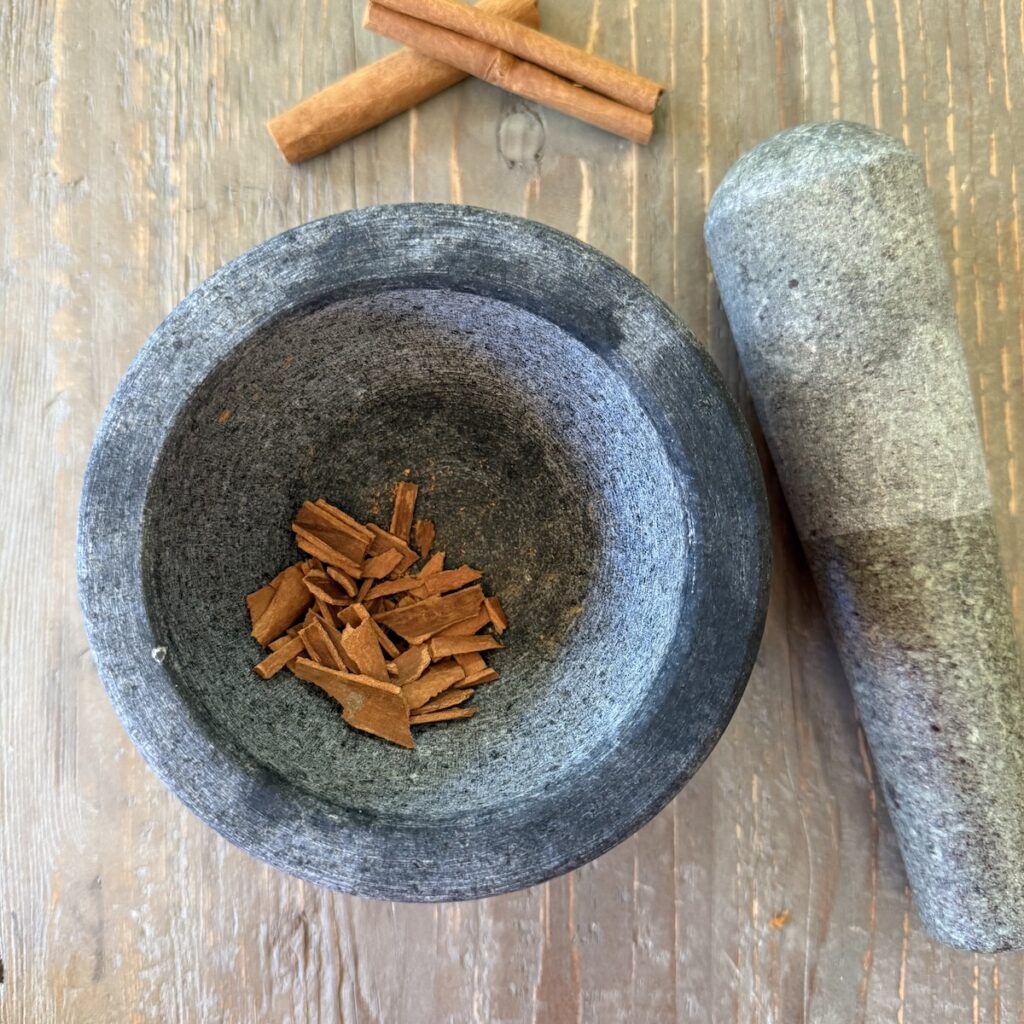
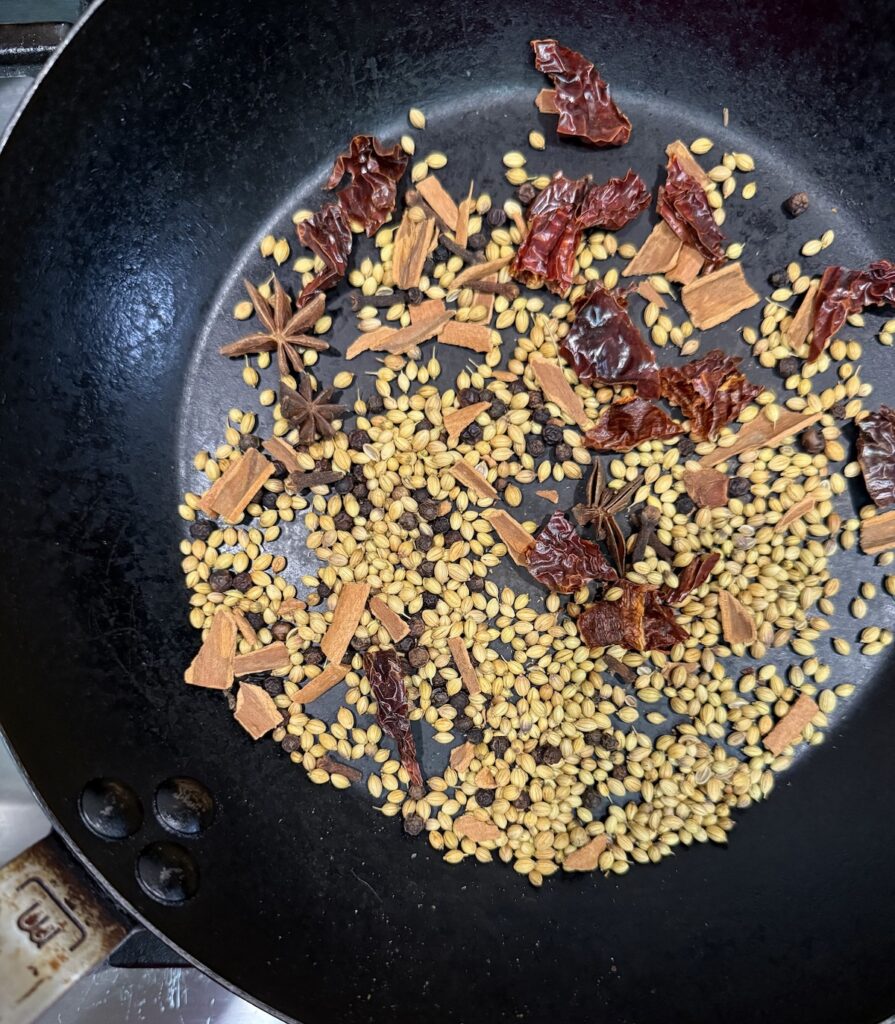
- How to dial up or down the heat? Do it with dried chilies and peppercorns, though the other spices have fragrant heat of their own. Vietnamese food isn't overly hot so go with a mild to medium hot chile, such as Kashmiri or New Mexico. I aimed for moderate heat with 3 grams but you can to up to say, 5 to 7 grams. Also, you can add chili to the recipe when you're cooking. That's why I don't have too much heat in the curry powder itself. Remove the seeds well from the dried chilies. Use scissors to cut them in half lengthwise then knock them out.
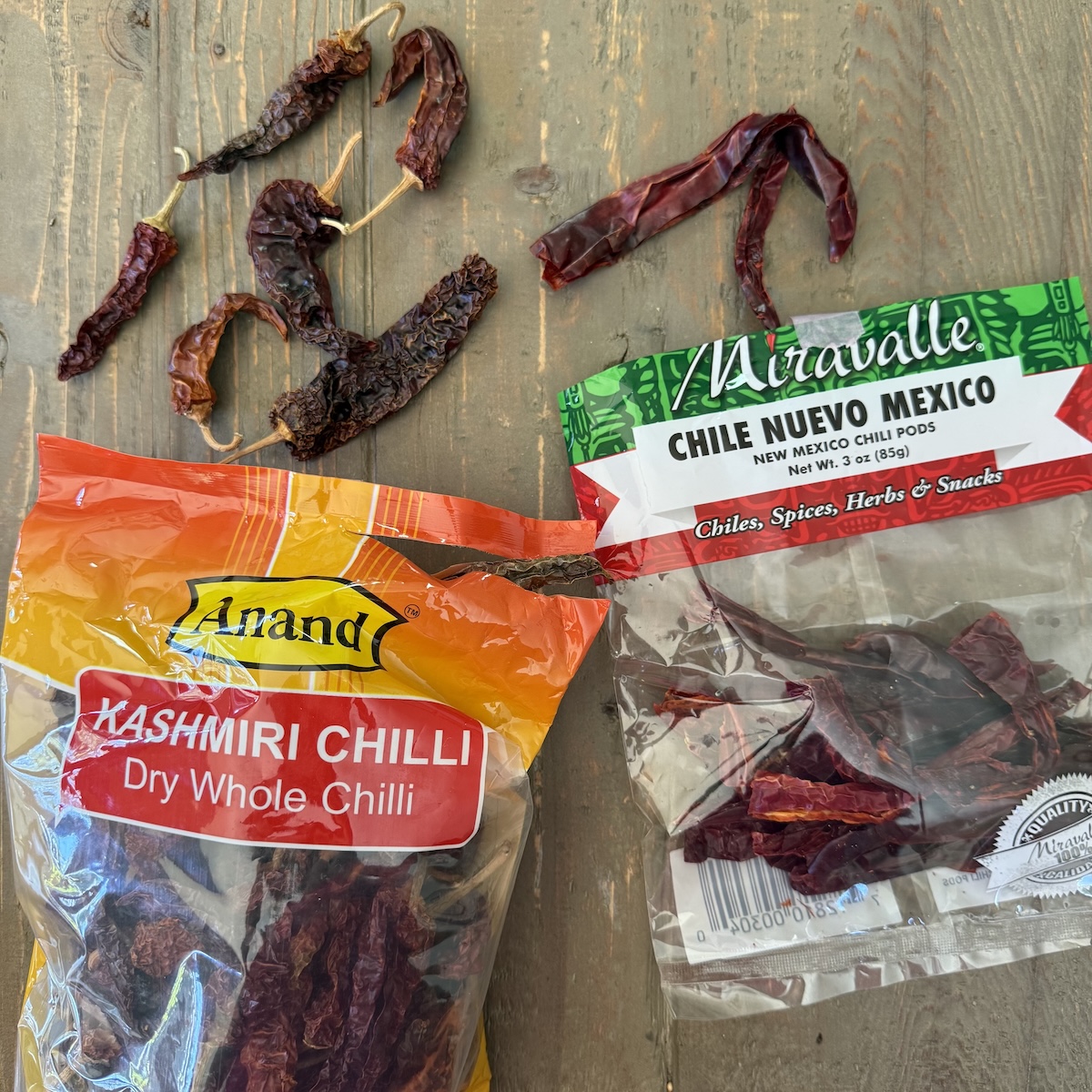
What makes this curry powder Vietnamese?
I formulated this curry powder by using a base of Madras-style curry powder and then adding spices that are often used in Vietnamese cooking, such as star anise and Chinese black cardamom. Many Viet curry powders also include annatto for blingy color but there's not need for such distractions. Use high quality turmeric and you'll get your beautiful yellow-orange color.
Of note in the photo below, Chinese black cardamom (tsao guo in Chinese, thao qua in Vietnamese) looks like a dried olive, as pictured right above the dried Kashmiri chilies below. It's sometimes just labeled cardamom at the Chinese and Viet market. And, there are two varieties of coriander seed -- football shaped ones favored by South Asian and Middle Eastern cuisines and round ones often used elsewhere. The former is sweeter than the later. I use them both!
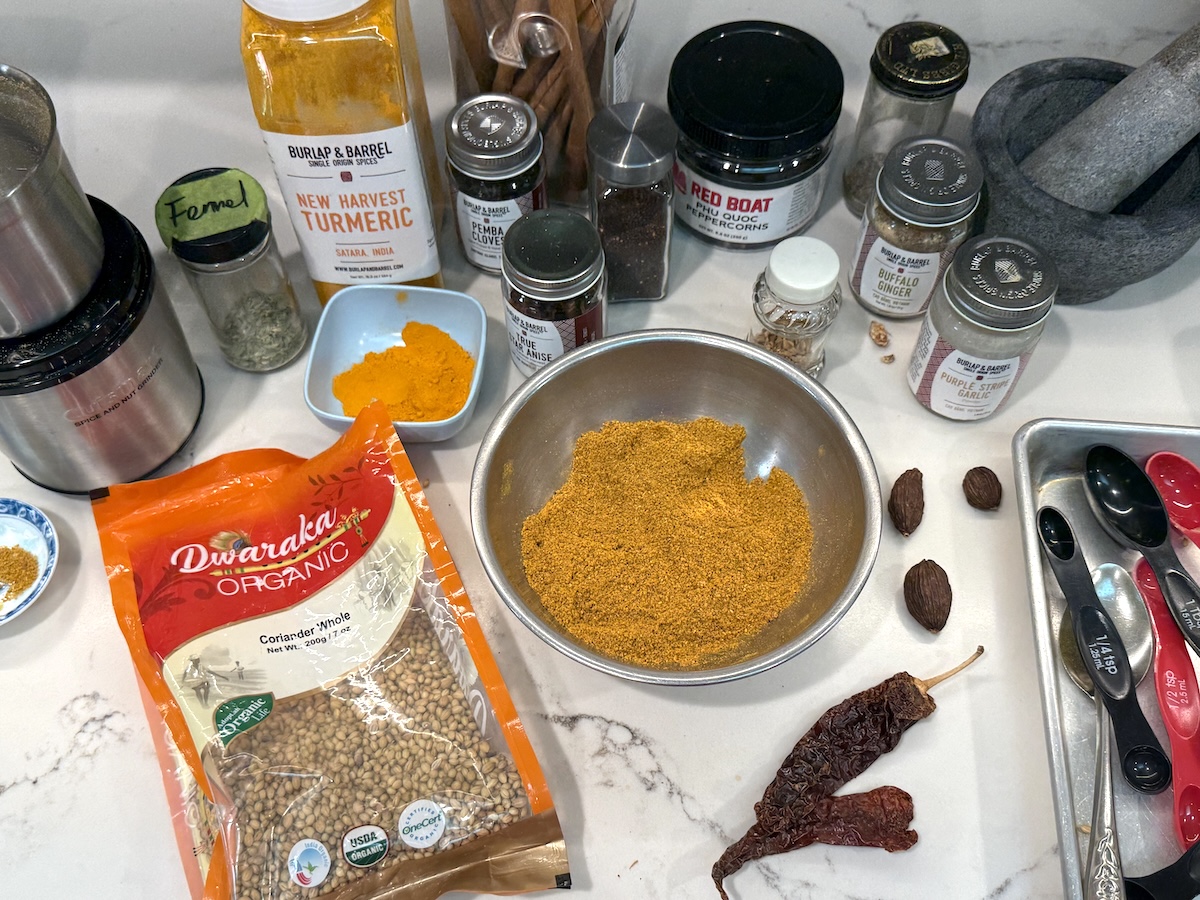
How to use this Vietnamese curry powder? Start with dishes like Vietnamese chicken curry and goat curry, you can use it for beef in la lot leaf, crispy fried smelts, curry fried rice, and stir-fried lemongrass chicken. Then try it out anytime Madras curry powder is called. The sky's the limit.
Vietnamese Curry Powder (Bot Ca Ri Viet)
Ingredients
Big spices
- 20 g | 4 ½ tablespoon coriander seeds
- 8 g | 1 tablespoon fennel seeds
- 6 g | 1 big cinnamon stick
- 3 g | 16 star anise petals
- 3 g | 1 ½ tablespoon seeded dried Kashmiri or New Mexico Chilies, snipped no bigger than ½ inch (1.25 cm)
- .5g | 10 whole cloves
Medium spices
- 12 g | 2 tablespoon cumin seeds (black or regular)
- 6 g | 1 ½ teaspoon black peppercorns
- 5.5 g | 1 ½ teaspoon fenugreek seeds
- 6 g | 1 ½ teaspoon mustard seeds (black, brown, or yellow)
- 1 g | ½ teaspoon cardamom seeds (Chinese black, black, or green)
Ground spices
- 16 g | 1 ½ tablespoon ground turmeric
- 5 g | 2 teaspoon packed ground ginger
- 2 g | ½ teaspoon ground garlic
Instructions
- Toast whole spices: Put the big spices (coriander to cloves) into a medium skillet. Set over medium heat, then toast, stirring often, until mildly fragrant, 2 to 3 minutes.
- Lower the heat to medium-low, add all the medium spices (from cumin to cardamom seeds), then toast, stirring, until all spices are fragrant, 1 to 2 minutes. Remove from the heat and let cool until room temperature, about 10 minutes.
- Grind and mix: Put the toasted whole spices in a spice grinder and grind to a pulverized powdery state. Transfer to a bowl, add the ground spices (turmeric, ginger and garlic), and stir to combine. Use immediately or store in a capped jar for up to 3 months in the cupboard or freeze for up to 1 year.


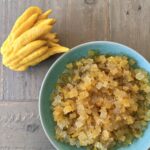
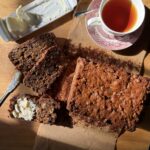
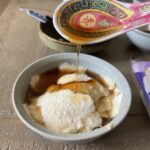
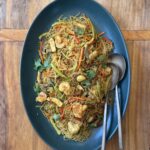
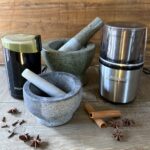

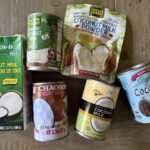
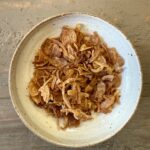

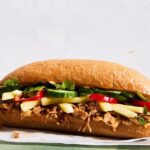

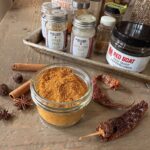
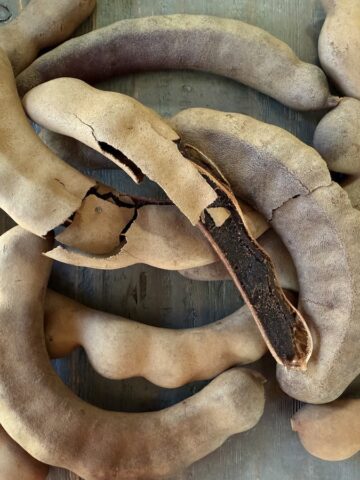



Brinda Crishna says
Wonderful flavours!